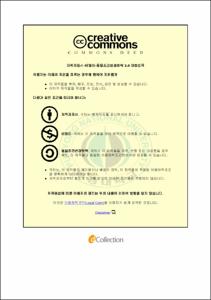태양전지 전면전극용 실버 잉크에서 실버 네오테카노에이트가 접촉 비저항에 미치는 영향성
- Abstract
- Since the issues such as depletion of fossil fuel, environmental pollution, and dangerousness of nuclear energy are currently magnified around the world, people shed new light on new renewable energy. Among various new renewable energy, it is a solar cell using solar light that has most often been studied and has been put to practical use. Solar cell is now being provided for industrial and family use and is worldwidely getting the limelight as a substitute for nuclear energy. Electric power from solar cell is produced through a method that convert solar light into electric energy and the maximization of solar cell efficiency might be the biggest issue. In addition to overseas companies, local manufacturers and researchers are making large investments in maximization of solar cell efficiency. Among a number of factors that impede the efficiency of solar cell, front electrodes formulated in front of silicon and contact resistivity between layers of silicon emitter are one of the main reasons.
In this study the selection of general materials for making silver ink for formulating front electrodes of solar cell and the influence of addition of silver neodecanoate, a kind of organic silver, on contact resistivity and efficiency were investigated. The ratio of solvent was determined by selecting BCA and terpineol through the cosolvent system and the kind and content of silver and glass frit were decided with inorganic solid content. Also, contact resistivity between electrode and wafer according to existence of organic silver was observed. It was found that the windows of firing temperature process broadened more with the addition of organic silver than those without organic silver addition, which seems to have contributed to the improvement of contact resistivity and the increase of efficiency through the increase of contact area on the interface of electrode and wafer and the increase of colloidal density inside glass frit layer.
- Issued Date
- 2014
- Awarded Date
- 2014. 2
- Type
- Dissertation
- Publisher
- 부경대학교
- Affiliation
- 대학원
- Department
- 대학원 인쇄공학과
- Advisor
- 신동윤
- Table Of Contents
- 목차
List of Figures iii
List of Tables vii
Abstract viii
Ⅰ. 서 론 1
Ⅱ. 이 론 3
1. 태양전지 (Solar cell) 3
가. 태양전지 기본 원리 및 종류 3
나. 실리콘 태양전지 11
다. 실리콘 태양전지 전극의 요구 특성 14
2. 전도성 잉크 15
가. 잉크 조성 15
나. 전도성 잉크 믹싱 및 분산 기술 17
Ⅲ. 실 험 18
1. 태양전지 전면전극용 잉크 제조 18
가. 캐리어 비이클 제조 18
나. 무기 고형분 선택 및 함량 선택 20
2. 전극 인쇄 22
가. 스크린 프린트 22
나. 건조 조건 및 소성 프로파일 23
다. 전면전극의 전기적 특성 평가 24
3. 유기 실버 첨가 실험 25
Ⅳ 결과 및 고찰 26
1. 용제, 유기 바인더의 종류와 함량에 따른 특성 26
2. 분산제의 종류와 함량에 따른 분산성 및 반응 특성 29
3. 무기 바인더, 실버 파우더의 종류 및 함량에 따른 전기 특성 33
4. 건조 및 소성 프로파일에 따른 전기 특성 39
5. 유기 실버의 유, 무에 따른 특성 41
가. 접촉 비저항 특성 변화 41
나. 태양전지 효율 특성 변화 44
Ⅴ. 결 론 51
참 고 문 헌 53
- Degree
- Master
- Files in This Item:
-
-
Download
 태양전지 전면전극용 실버 잉크에서 실버 네오테카노에이트가 접촉 비저항에 미치는 영향성.pdf
기타 데이터 / 2.7 MB / Adobe PDF
태양전지 전면전극용 실버 잉크에서 실버 네오테카노에이트가 접촉 비저항에 미치는 영향성.pdf
기타 데이터 / 2.7 MB / Adobe PDF
-
Items in Repository are protected by copyright, with all rights reserved, unless otherwise indicated.